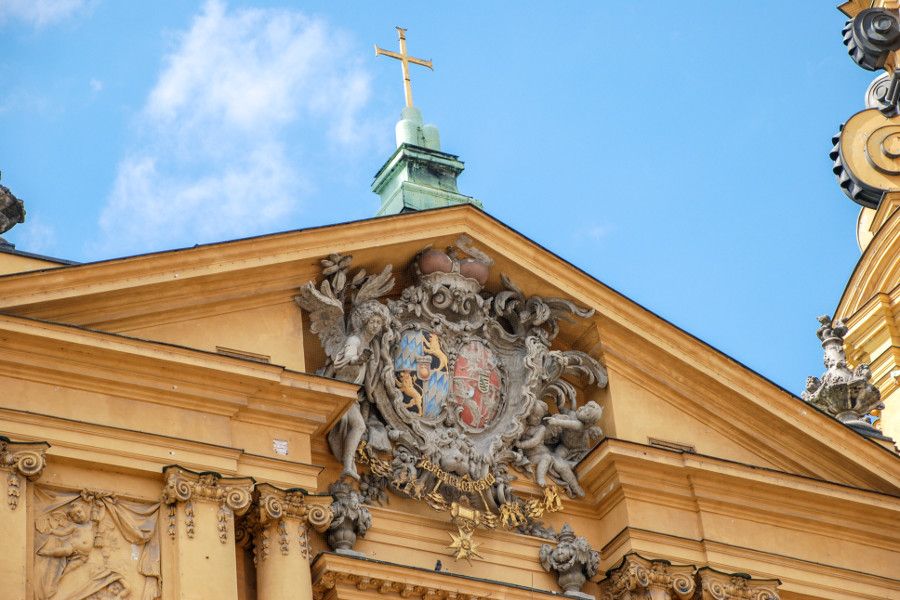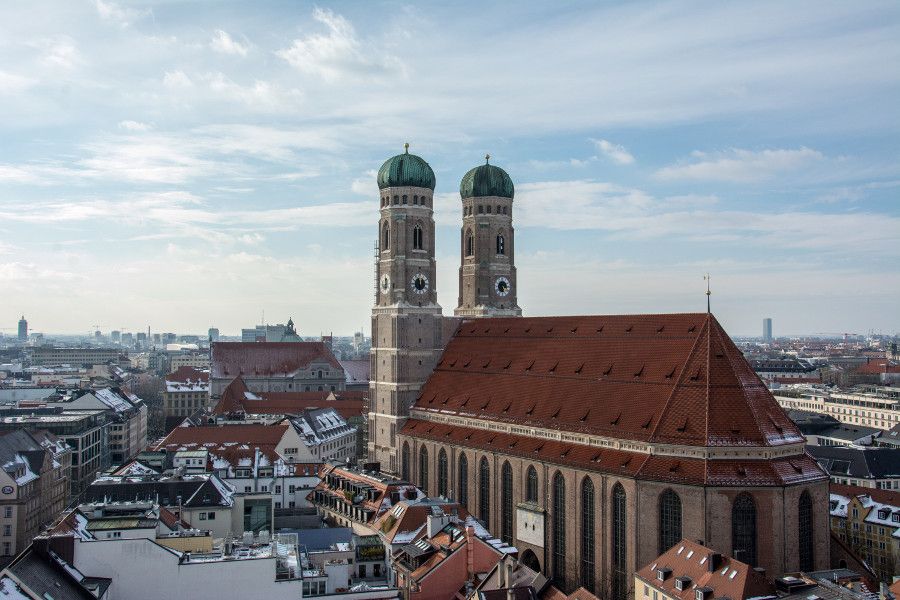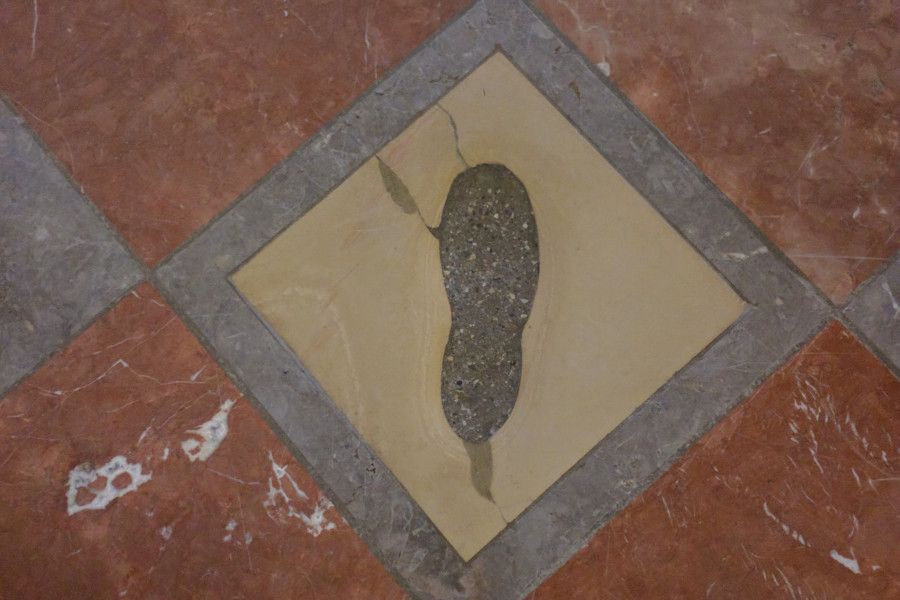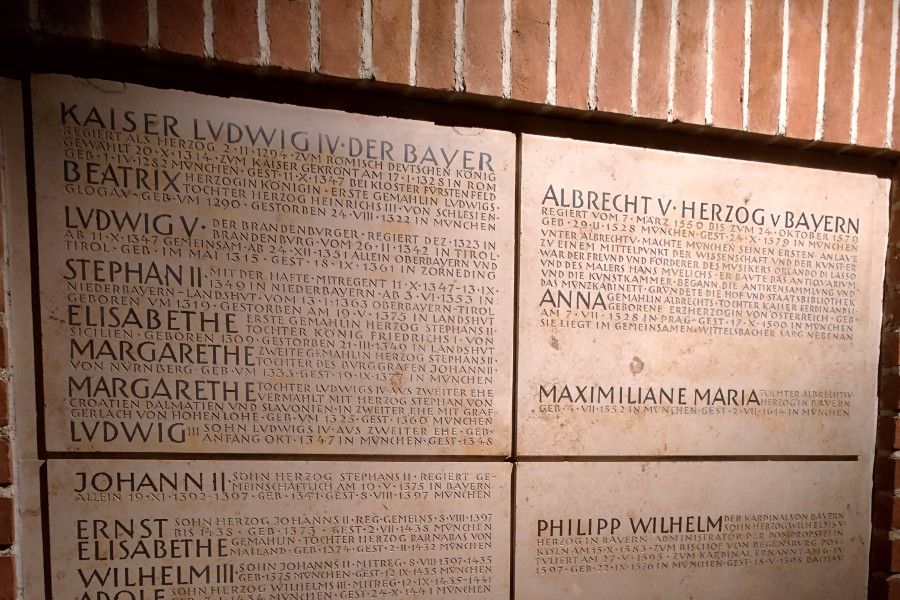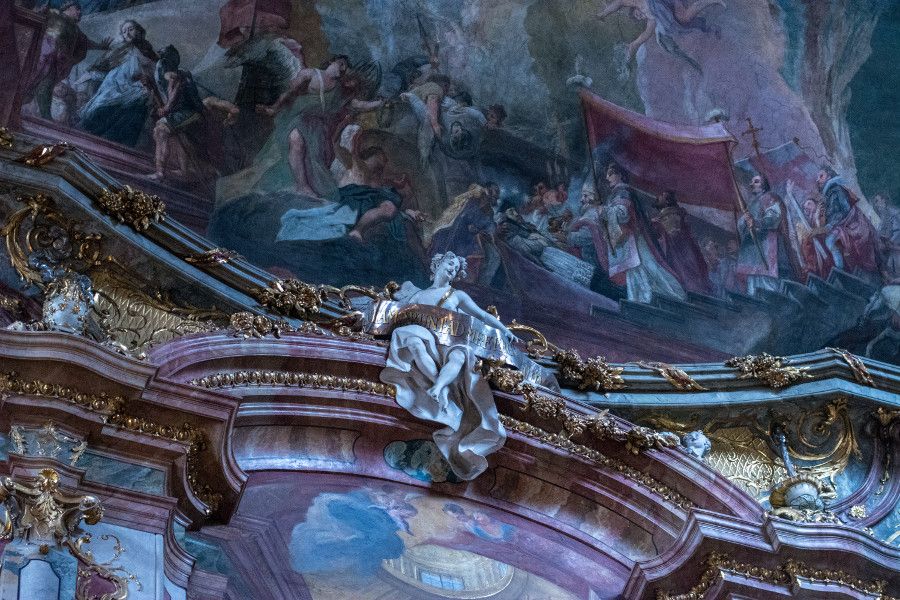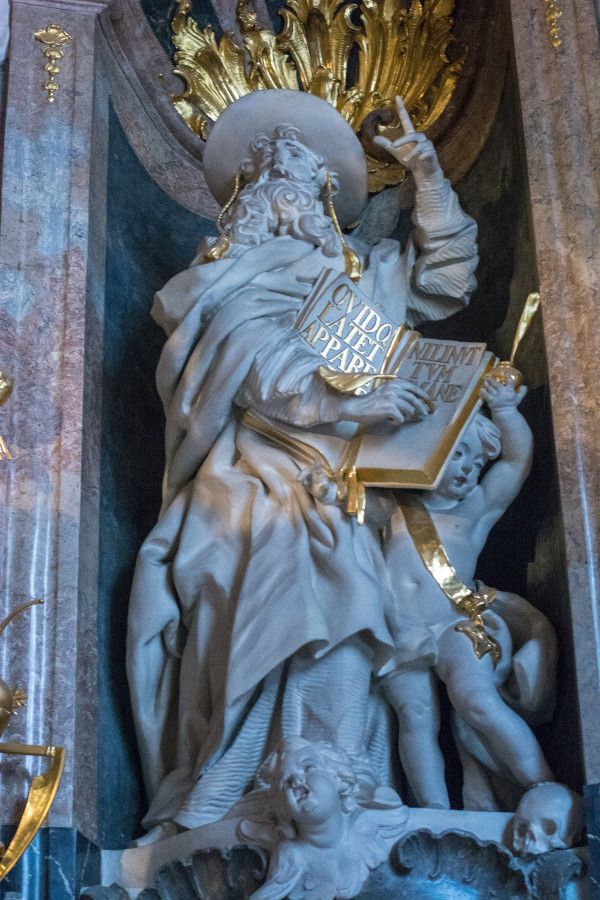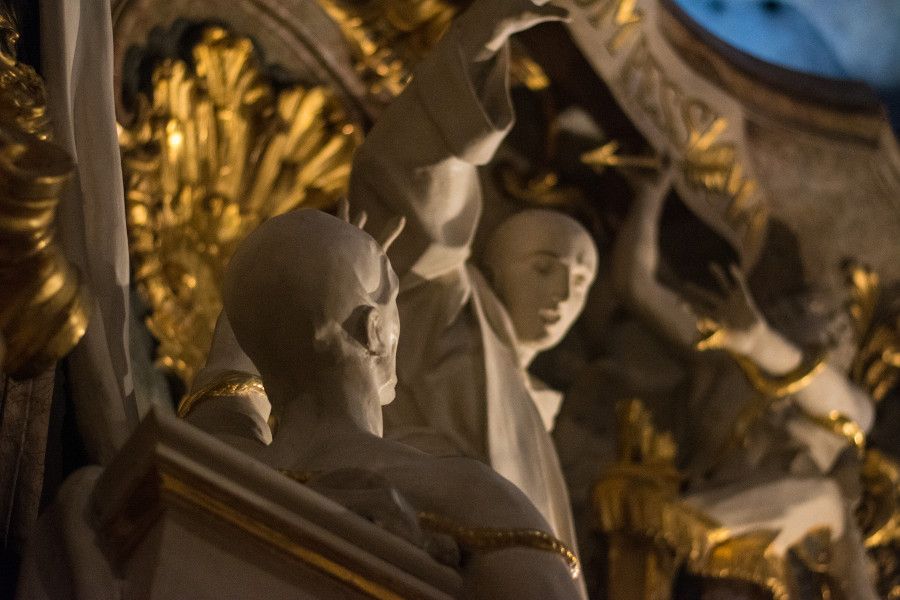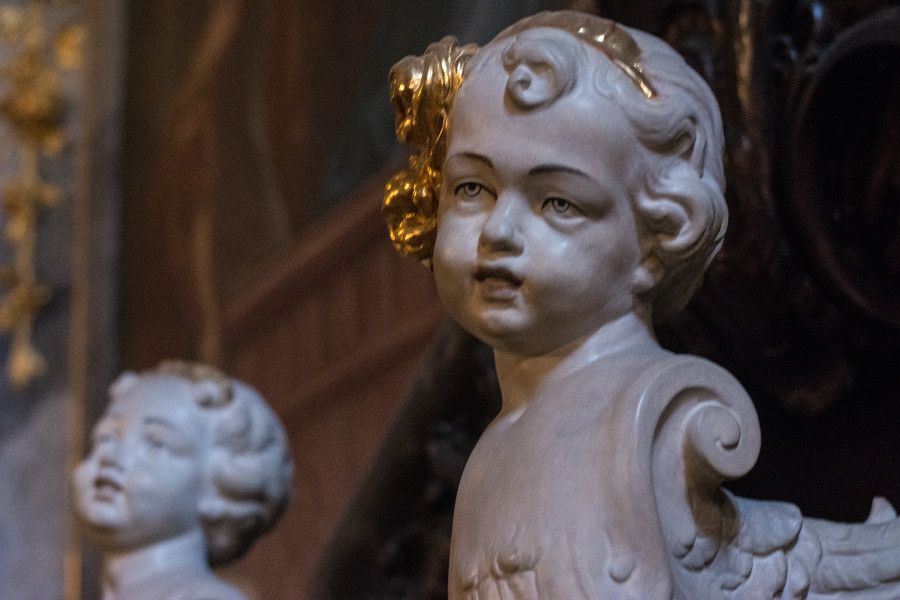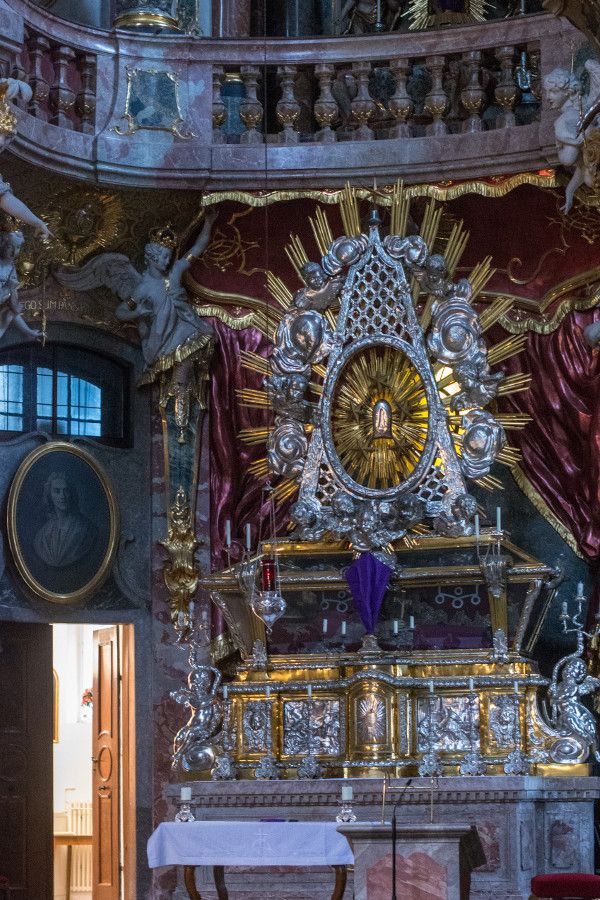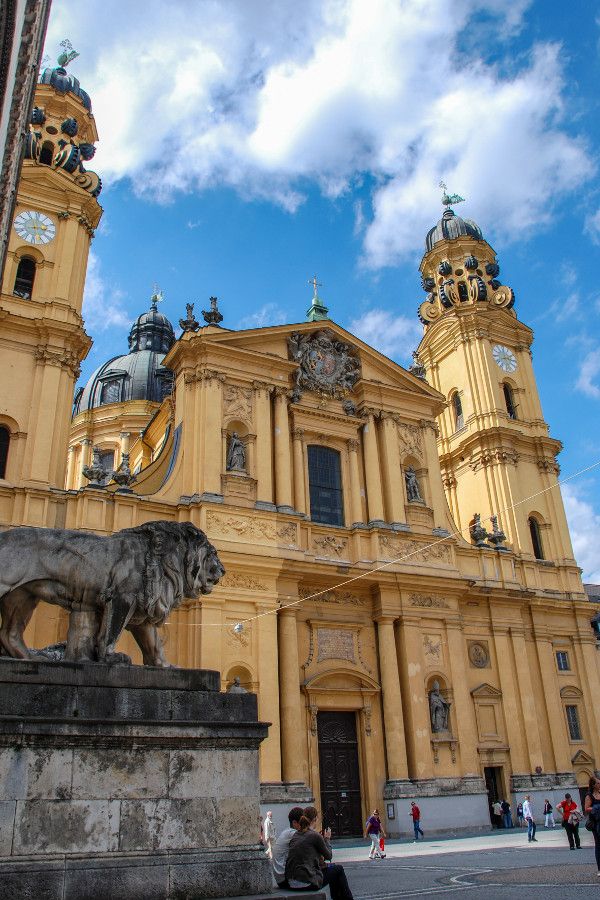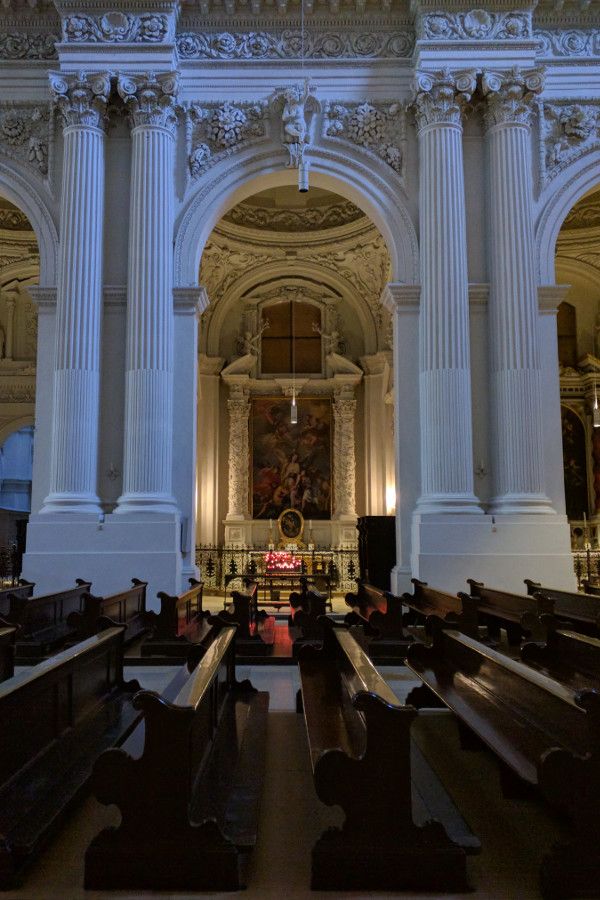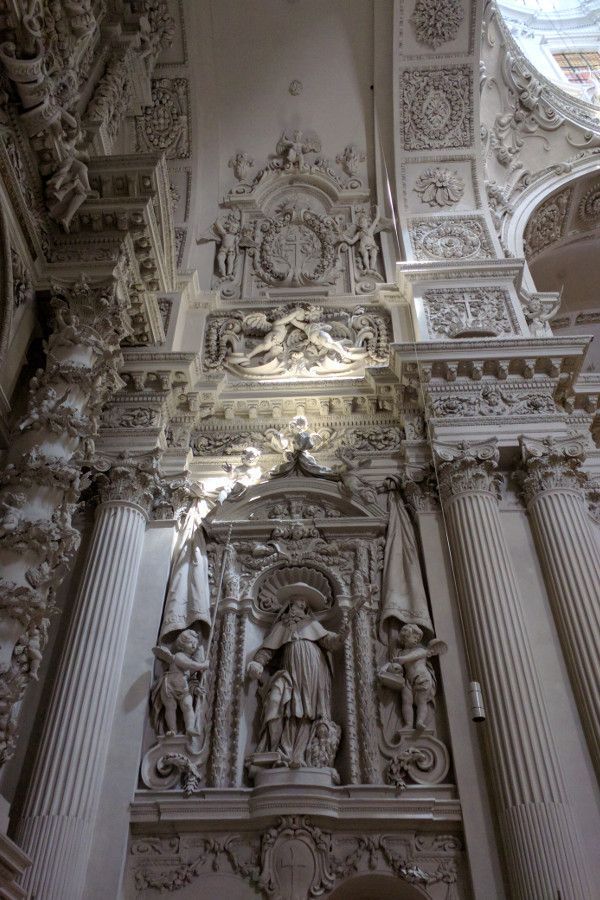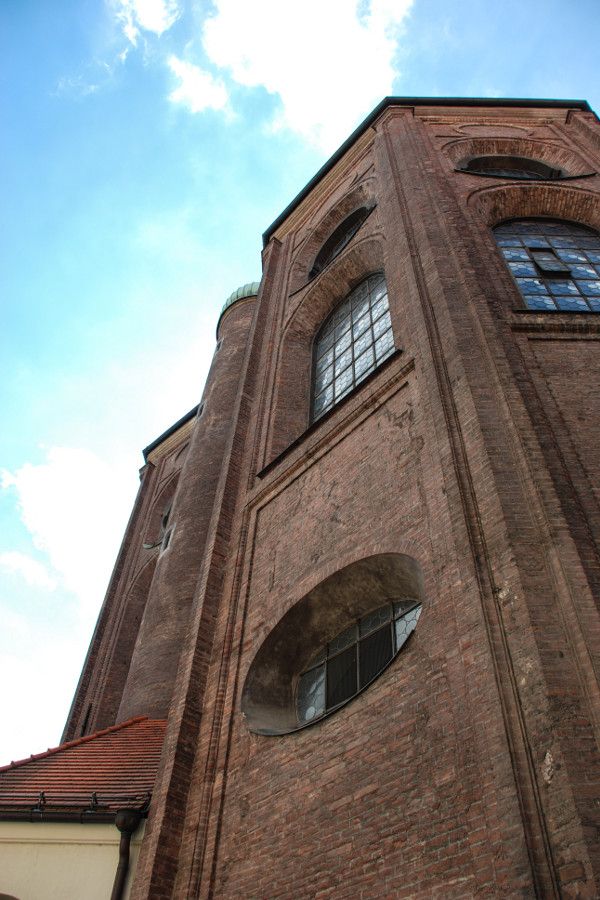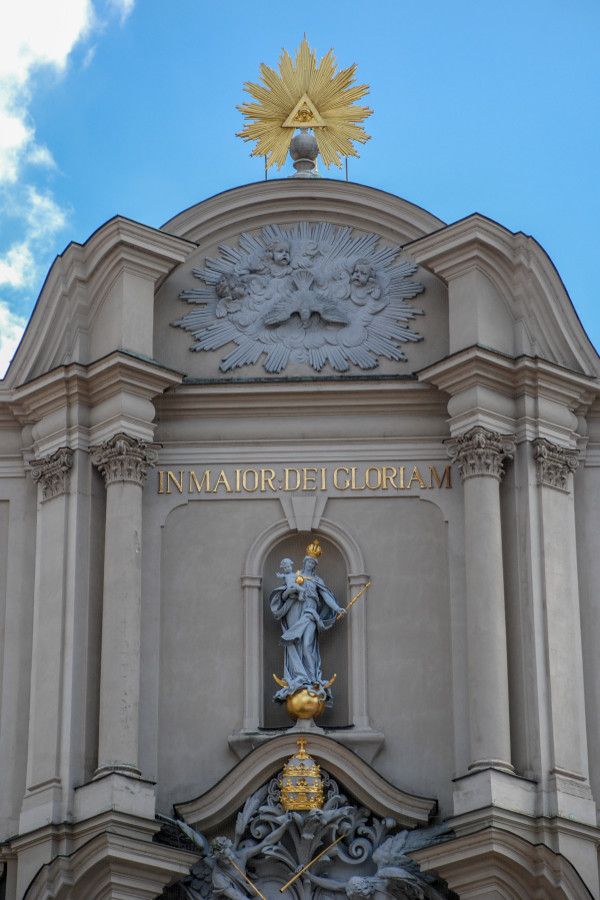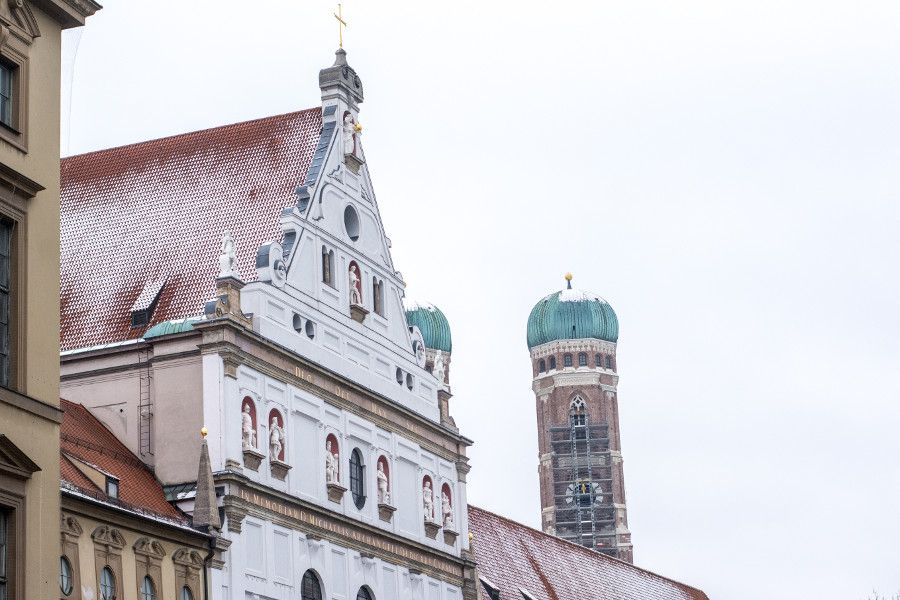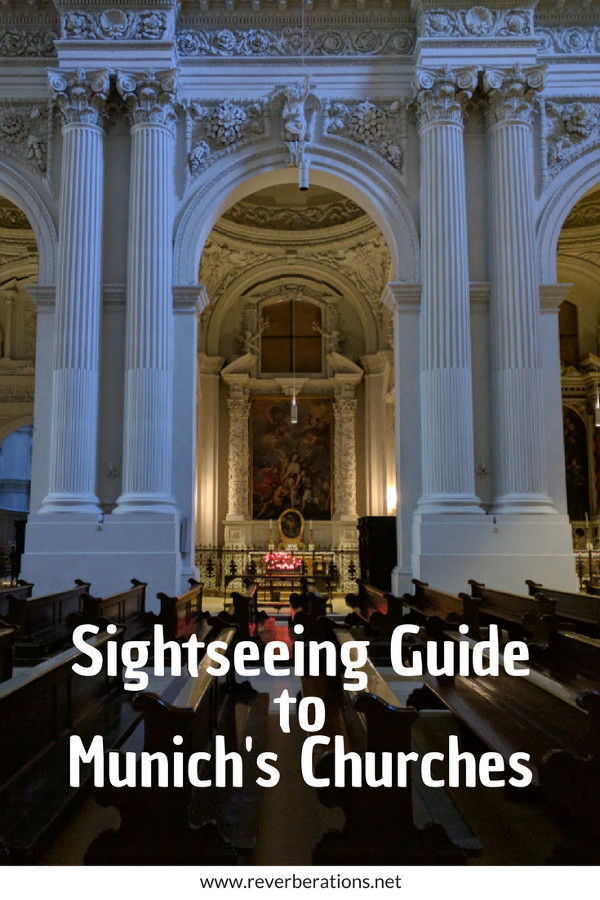Munich‘s churches and cathedrals are a popular spot and not just for the pious. Tourists flock to the city’s houses of worship to admire the architecture, the art, the history and maybe to reflect for a few solemn moments. Munich’s churches range from the massive and iconic to the small and hidden away. Some are modest and others are spectacularly indulgent. Even if you’re only in the city for a short time, some of Munich’s churches should be apart of your itinerary. I’ve put together a guide for visiting six of Munich’s most notable churches in the downtown area.
Frauenkirche
The Frauenkirche is without a doubt Munich’s most iconic church. Maybe it is even its most iconic building. The church’s twin towers with their green domed roofs are an important part of the city’s skyline. In fact, to this day buildings may not exceed the height of the Frauenkirche. Visitors can enjoy the Munich skyline from inside the Frauenkirche’s domed towers.
Commissioned by Duke Sigismund, the construction of the church began in 1468 under Jörg von Halsbach. In 1494 the church was consecrated despite not being fully completed. It wasn’t until 1525 that the towers of the late Gothic style church were finished construction.
In addition to being able to hold 200,000 people, the Frauenkirche has a unique legend. At the entrance to the church is a small area of the floor where there’s a single visible footprint. Rumor has it that it is the Devil’s footprint.
Perhaps the most impressive piece of the many in the Frauenkirche is the tomb of Emperor Louis IV (b. 1282, d. 1347). The large and elaborate tomb monument is the work of Hans Krumpper.
Frauenkirche, Frauenplatz 12, 80331
Asamkirche
Nestled along a shopping area on Sendlinger Str. it is difficult to miss the Asamkirche. The elaborate exterior teases what is inside. Built by two brothers as a private church, the St. Johann Nepomuk Church (as it’s formally called) was eventually opened to the public.
From 1733 until 1746 Edrid Quirin, a sculpture, and Cosmas Damian, a painter, built the church in a late Baroque style. Although the Asamkirche is only about 72 feet by 26 feet in size, every space is extravagantly decorated. Inside, the dramatically lit church packs quite the punch. It’s one you’ll really marvel over!
Asamkirche, Sendlinger Str. 32, 80331
Theatinerkirche
Set on Odeonsplatz, the bright yellow Theatinerkirche shares the square with the Residenz and Feldherrnhalle. Elector Ferdinand Maria and his wife commissioned the building of the church in honor of their son, Max Emanuel.
The church was designed by Italian architect Agostino Barelli in an Italian Baroque style from 1663-1688 before Enrico Zuccalli took over in 1690 adding the towers on each side of the church. The front facade was then added in 1765-1768 by François de Cuvilliés. It’s interesting to note that all three architects worked on other Munich landmarks such as Nymphenburg Palace and the Residenz.
Theatinerkirche, Salvatorplatz 2A, 80333
Alter Peter
While the official name is St. Peter’s Church, you are more likely to see and hear it referred to as Alter Peter (literally “old Peter”). The church sits snugly between Viktualienmarkt and Marienplatz and it is the oldest church in Munich.
The site is a hill known as Petersbergl. In the 13th century, a church was built on the location which has a long history as a religious site. Later, in the 14th century, a fire destroyed the church and it was rebuilt to what we know today. A spire was added in the 17th century.
Inside you will find impressive altars and Gothic paintings, including a number by Jan Polack.
Alter Peter’s tower offers one of the best views in Munich. It is one of several observation points around Marienplatz. For a few Euros you can climb the nearly 300 steps up to the top for stunning 360-degree views over the city and, on a clear day, all the way to the Alps!
Alter Peter, Rindermarkt 1, 80331
Heilig-Geist-Kirche
Just across the way from Alter Peter is the Heilig-Geist-Kirche, or Church of the Holy Ghost. The church is the oldest surviving church in Munich with its roots going back to 1392.
In the 18th century, the Asam brothers (of the Asamkirche) and architect Johann George Ettenhofer put a Baroque spin to the Gothic church. Renovations took place in the late 19th century as well as in the 20th century.
Heilig-Geist-Kirche, Prälat-Miller-Weg 1, 80331
St. Michael Kirche
Many associate the Neuhauser Str. pedestrian area with shopping. Any brand worth their salt has a shop (or two) here. But it’s also the home of St. Michael Kirche. The Jesuit church is the largest Renaissance church north of the Alps.
The church was ordered by William V, Duke of Bavaria and it was built between 1583-1597. The church’s barrel-vaulted roof would be the largest in the world if it wasn’t for St. Peter’s Basilica in Rome. While you might expect a Jesuit church to be more modest, a more indulgent Roman Catholic style won out during the Counter-Reformation.
Like most of the churches on this list, St. Michael is the resting place for many of Bavaria’s royalty. Most notable at this church is King Ludwig II of Neuschwanstein fame.
St. Michael Kirche, Neuhauser Str. 6, 80333
Tips for Visiting Munich’s Churches
Each church has its own set of rules. It’s important to remember, at the end of the day, these are houses of worship. It’s important to be respectful no matter what religion you are or aren’t.
Common rules to look for are the removal of hats and limited use of cameras. Also, be cognizant of the church’s worship schedule. During services, churches are not open to sightseers.
While it is free to visit the churches, I always encourage visitors to leave a small donation. Consider it the cost of admission and know that it helps maintain these historic and impressive buildings. Many of the church crypts are also available to tour. Sometimes there is a fee in order to access these areas.
Getting to Munich’s Churches
All six of the churches I’m highlighting are in Munich’s downtown area around Marienplatz. Getting around on foot is the easiest since they’re relatively close together.
The S-Bahn lines S1, S2, S3, S4, S6, S7, and S8 as well as the U-Bahn lines U3 and U6 all stop at Marienplatz Bahnhof, or train station. These are the most direct ways to access the city square but trams and buses also serve the surrounding area. Street parking is available but is usually limited. Additionally, because Marienplatz is part of a pedestrian-only zone, you may not be able to park very close.
All opinions, as well as all photos, are my own.
